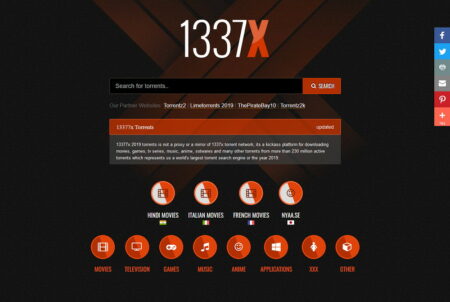In 2022, the digital marketing trends we have become accustomed to will be experiencing sizable changes.
Adapting to the new trends taking over this year will be challenging, and might need some amount of monetary investment.
We share the top 15 digital marketing trends businesses need to be aware of so they can compete better in the market.
1. Digital Marketing Analytics
Data will be driving digital marketing in 2022—it has been doing so in past years and will transform how marketers adapt their strategies in the foreseeable future.
But the data marketers collect needs to be useful and all-encompassing. It is no longer enough to examine the amount of clicks on an email, website traffic, and number of purchases.
You also need to understand the marketing funnel—how are customers finding you? Why are they using certain channels as opposed to others?
Other areas that can make or break your strategy are the length of time a customer stays on a webpage—are they clicking through to product pages and checkout?
If users are interacting with content and your website, but not completing purchases, there could be an issue with your product or checkout pages.
Data needs to be collected in a number of areas and examined closely to improve marketing strategies.
While it isn’t possible for marketing teams to employ groups of analysts, artificial intelligence-based software can parse through reams of data to produce results.
To create a digital marketing strategy that boosts conversions in 2022, optimize your data analysis process.
2. Automation
Speaking of AI, another area where digital marketing is using AI-driven software is in automation.
Marketing automation is racing ahead in 2022—almost every business is investing in automation software.
The sophisticated technology we now have access to allows marketers to program software to trigger responses to specific customer behaviors.
From sending reminder emails to prospects to remarketing to existing customers, automated systems can be set up to engage your audience at all times without manual inputs.
Automation software does require monetary investment—but it will make workflow much faster, more efficient, and will allow businesses to convert more.
3. Conversational Marketing
The digital marketing trends of 2022 will be relying heavily on AI—yet another aspect of marketing that will use AI to generate leads and keep customers engaged is chatbots.
Conversational marketing is going to be a massive lead generation opportunity in 2022—more and more, customers want to be able to interact with brands before they purchase from them.
Powered by AI and automated software, conversations are encouraging users to become customers by guiding them every step of the way in the sales funnel.
This is possible because the chatbots we now have are far more sophisticated than anything we have had before—they use machine-learning technology to produce human-like replies.
Businesses are incorporating chatbots on their websites and on social media channels to ensure that customers can reach them whenever they want, and get prompt responses.
And by using AI, businesses save on the cost of a 24-hour sales or customer service team—the AI can handle complex queries, before exhausting its limits and handing over to staff.
There are a number of chatbot creation tools now available to marketers so conversational marketing is an area that can no longer be ignored in 2022.
4. Email Marketing
One of the aspects of digital marketing that has consistently delivered great ROI is emails and newsletters.Despite the new data protection systems—like GDPR—in place to ensure that customers have the option of choosing whether or not to receive mails, email is still delivering results.
However, in 2022, email marketing will no longer be able to exist as an island—marketers will need to incorporate it into their overall omnichannel strategy.
Emails will have to be tied into social media marketing and chatbots—create a loop where multiple channels direct users to others, and eventually towards making purchases.
Marketers will also need to work on their email lists—better segmentation will produce more open and click rates. And segmentation can be achieved through data analysis.
In addition to the above, the content that businesses include in their newsletters needs rethinking. Long newsletters that pack in too much information aren’t as effective.
Focus your efforts on a few core calls-to-action to improve click rate—because if users are opening your emails but not clicking from them to your website, something is wrong.
Don’t be afraid to send short, personal messages, signed by notable persons within your organization—the personal connection will improve clicks.
More than anything else, 2022 is the year that you conduct extensive email testing on your campaigns—the right formula for you is out there. You need to make time to look for it.
5. Blogging
Blogs have been at the core of content marketing strategies for years now—which is why we are now seeing a change in the way business blogs are run.
For instance, guest blogging is on the rise—while you can fill your blogging schedule with in-house blogs from your staff, an outside perspective gives you a leg up over the competition.
Guest blogs showcase the company’s place in the industry—the organization has risen to such a level of importance that others want to leverage your reach.
Another area of blogging that is seeing change is in the size of the content. Up until recently, shorter content was the norm—500-750-word pieces were easier to read and kept audiences engaged. But short content hasn’t had much success in terms of conversions—on the other hand, long-form content is much better for engagement and for SERP.
Longer content shows a willingness to dive deeper into matters instead of offering a rough overview—and gives writers an opportunity to use keywords organically, which improves reach.
Plus, the longer and more captivating the content is, the longer users will stay on your website—this will help you capitalize on internal links, increasing users’ stay even longer.
The challenge when creating longer content is that it requires more time, which is a precious commodity for marketers.
But a number of companies are employing remote staff who focus entirely on writing and link building—thus creating quality content that will improve traffic.
The good old Google advanced search operators to find guest posting opportunities never goes out of fashion. There are a number of codes to do that.
This is by far the guest blogging strategy to find some really good sites.
Here are some ways to do that
Your Niche “submit+post”
Your Niche “guest+post”
Your Niche “write+for+us”
Your Niche “Write for us Technology”
Your Niche “guest+bloggers+wanted”
Your Niche “contribute”
Your Niche “contribute an article”
Your Niche “want to write”
Your Niche “Add content”
Your Niche “Submit a guest post technology”
Your Niche “guest post guidelines”
Submit a guest post technology
6. Influencer Marketing
Influencers are going to continue to be major players in the digital world—with a twist.
Businesses have recognized that mega-influencers are often unaffordable—those with millions of followers demand a hefty price for a collaboration.
But micro or nano influencers—with ten thousand or fewer followers—are less expensive and get more results from their reach.
Your influencer marketing strategy will need to change in 2022—focus on long-term collaborations with groups of smaller influencers, instead of investing in one mega-influencer.
7. Interactive Content
Most marketers will have noted the sudden rise in popularity of augmented reality (AR), even more so than virtual reality (VR), though both have their place in the marketing realm.
Interactivity has become a cornerstone of digital marketing—Snapchat and Instagram have already created AR filters that are being heavily used by customers.
Brands are joining in, building AR filters that put the Tardis in your home or allow you to try on make-up before you buy it.
But interactivity can also be accomplished through something simpler—3D videos are gaining steam on Facebook and Instagram, as are 360-degree videos.
Such videos give the illusion of VR without the additional cost.
Interactive quizzes, polls, parallax, GIFs, and animations on various types of infographics are all ways of creating content that is dynamic, instead of static. And most don’t cost much money.
This is an area that needs to be prioritized in 2022 if you want your content to gain more traction.
8. Internet of Things
The Internet of Things (IoT) is the term used to describe devices that are interconnected through the internet. These devices could be personal or professional in nature.
With so many devices—from handhelds to smart homes—being connected, the opportunities to reach customers will grow immensely.
Of course, it won’t be possible for every business to create IoT devices—such products could be expensive to create and will need to be well-planned.
But that doesn’t mean that marketers can’t use existing IoT devices and apps to better target customers or share notifications within set geographical locations.
IoT marketing is still in its infancy, but in 2022, we are going to see it mature—marketers will need to be ready to capitalize on this arena.
9. Live Video
Video marketing isn’t going anywhere, definitely not in 2022. However, the kind of videos that corporates will be making is about to see a change.
The video boom from a few years ago has declined—inflated numbers sent marketers into a tailspin of video content creation that failed to deliver the promised results.
Pre-produced video is also time-consuming, labor-intensive, and expensive to create. But there is a way to have your video cake and eat it too—live video.
Live elements are becoming a huge draw on social media—they give brands a more personable appearance by putting a face to the brand, and add a sense of immediacy to the content.
On ephemeral content like Instagram and Facebook Stories, and Snapchat, live video allows marketers to engage their audiences without having to clog up their stream with endless posts.
In 2022, make live video a priority over pre-produced video content.
10. Micro-Moment Marketing
Understanding the customer lifecycle will be crucial in 2022 because marketers need to focus on capitalizing on micro-moments.
One cannot look at the marketing funnel as a way to drive a lead from a social post to a sale—you will be missing key moments in between that could earn you a loyal customer.
You now need to identify when and why customers want to become aware of your brand and your products, so you can be there when they are asking questions about you.
Understand the difference between someone wanting to learn more, and someone showing positive intent to purchase—trying to sell to someone who isn’t interested will not help.
This process will require a great deal of data—you can collect it using free survey makers or by holding focus groups so as to reach more customers when and where they are looking.
11. Personalization
Personalization is pivotal to marketing success—it is one of the biggest and most vital digital marketing trends in 2022 because it will boost conversions and overall revenue.
The time of businesses being aloof from their customers is long gone—now, it is all about building a personal relationship with your customers.
This means using the customer’s name when addressing them in bulk emails—but it also means tailoring email lists so customers receive content based on their specific interests.
The data collection we mentioned earlier is crucial to the personalization process being a success—you need to know as much about your customers as possible to make this work.
12. Podcasting
Starting up a podcast channel has become the new norm, so should you join this 2022 trend? Podcasting requires some thought and planning before being implemented.
If you don’t have a podcast strategy, it would be unwise to start one—there are numerous podcasts already vying for customers’ attention. To make it a success, you need a plan.
Decide what your podcast niche is—if you’re planning to reuse your blog content, that won’t be enough of a draw.
Can you bring in experts? Do you have a different take on a particular aspect of your industry that you will share? Promoting your product is not the way to win listeners over.
Is your podcast sustainable? A handful of episodes with no prospect for further content will drive listeners away.
For marketers who have a plan and resources, podcasting can be a success because listeners have access to podcasts on a variety of apps, and word-of-mouth marketing is immense.
But growing a subscriber base can be a challenge, so strategize this area before implementation.
13. Social Media Channels
The traditional social media channels are going to thrive. But in 2022, marketers need to be aware of new social channels and their impact on marketing.
TikTok, for example, has been a massive success with Gen Z across the globe—if this is your target audience, you should be looking to join TikTok soon.
And in the wake of TikTok, we may be seeing new channels crop up—marketers need to be aware of those platforms and how to leverage them to reach new audiences.
The important thing to remember about using social media channels is to be as authentic as possible—users are aware of adverts disguised as content now.
Plus, whatever channels you do use, remember to engage with the audience—replying to comments and tags makes brands more approachable and successful.
14. User-Generated Content
The popularity of user-generated content cannot be discounted. UGC brings brands closer to their customers by allowing customers into their sanctum-sanctorum—their brand profiles.
Being featured on a brand’s account—which often has thousands of followers—is a highlight for many users.
For brands, sourcing content from users saves them the trouble of having to create new content—while still being able to share quality content on a regular basis.
In 2022, work on a few UGC campaigns—it is always best to offer some type of reward for participating in them to get more people involved.
15. Visual and Voice Search
Search is changing, and in 2022, we are going to see the impact of those changes. We have already mentioned how IoT is connecting devices—but it’s also enabling voice search.
With smart devices like Google Home and Alexa, people are taking to asking their devices queries, instead of heading to a search engine to type it in.
This will impact the kind of keywords marketers can use in their content—keywords will need to be semantic and tailored towards answering specific questions.
At the same time, visual search is becoming more popular. Visual search has been popularized by Google, but it isn’t the only platform to use it.
Pinterest has launched its Lens, which allows users to search for items by zooming in on real-world objects. Other mobile apps are being created to do this, as well.
Optimize your visuals for search by using keywords in the filenames and alt-tags—this will make your visuals more discoverable.
Conclusion
Going through these 15 digital marketing trends can feel overwhelming—but your marketing team isn’t expected to change your strategy overnight. Slowly, but steadily, make these changes and you will be able to have a successful 2022.








